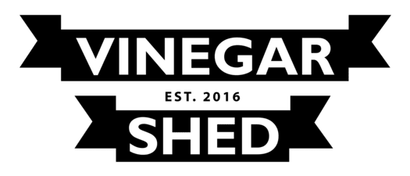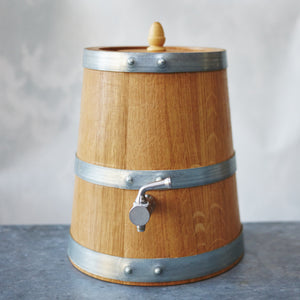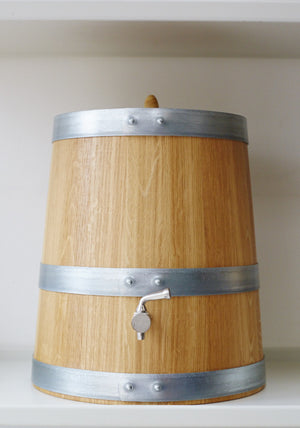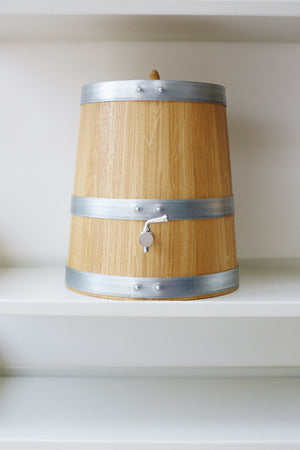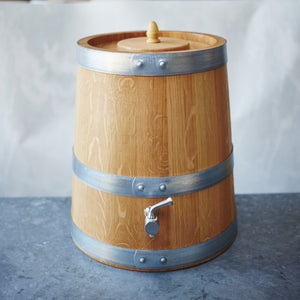- Home
- Shop
- About
- Recipes
- Videos
- Press
- Stockists
- Trade Enquiries
- Contact
- Log in
-
GBP £
French Oak Wooden Vinegar Barrel - 10 litre
£300.00
In a nutshell: This large 10 litre barrel is the perfect piece of kit for adventurous barmen wanting to make homemade Vermouth, Amaro or fruit and vinegar Shrub syrups.
Kept in the kitchen, it will become a much admired item as you turn the tap to siphon off some home made vinegar. Ideal for creative chefs who would like to make their own fruit or herb infused vinegars, single varietal wine or cider vinegars. It's also the perfect piece of kit for adventurous barman and can be used to make home made Vermouth or Amaro, fruit and vinegar based Shrub syrups or store spirits such as grappa, whisky or Rye.
Details
Our vinegar barrels come in 3 different sizes - 3 litres, 6 litres and 10 litres. Each barrel comes with a stainless steel tap unless specified - our 3 litre barrels come with either a wooden or stainless steel tap. Contact us if you prefer wooden taps with our 6 or 10 litre barrels as we can order them for you - allow 2-3 weeks for delivery. If you want larger sizes, we can also do special orders for 28 litre or 55 litre barrels with or without taps.
- 3 litre (height 24cm, top width 16cm, base width 21cm), wooden or stainless steel tap, please specify when ordering.
- 6 litre (height 26cm, top width 21 cm, base width 26cm, stainless steel tap only.
- 10 litre (height 32cm, top width 24cm, base width 29cm, stainless steel tap only.
Additional barrel and vinegar information
Preparing the new barrel
How to make a vinegar mother
Vinegar in a nutshell
About
Sourced from one of the best French cooperage firms used by leading cognac and Bordeaux wine companies, each barrel is made with sustainable French oak. Aged for 24 months before being handed over to the master coopers who then go to work on each handmade barrel. Toasting the wooden planks over an open fire before cutting into staves and beginning the intricate process of "mise en rose" or 'raising the barrel' when the staves are first put together in a temporary end hoop. Then, using a combination of fire, steam and water, the staves are slowly bent into shape before they add the finishing touches - attaching the final galvanised hoops and painting a coat of light natural varnish on the outside.
Collections: Vinegar Barrels , Vinegar Pots & Barrels
You may also like
News & Updates
Sign up to get the latest on sales, new releases and more…
HELPFUL LINKS
VISIT THE EALING GROCER
Our new neighbourhood food store is now open for all Vinegar Shed products plus everyday staples, fruit & veg, cheese & charcuterie, provisions, kitchenalia & food to go.
18 St. Mary’s Road, Ealing, London, W5 5ES. Tel: 0208 566 0632
Opening times:
Tuesday-Saturday 9AM to 5PM
Sunday 9AM to 3PM
© 2026 Vinegar Shed. | Photography by David Loftus | Powered by Shopify
